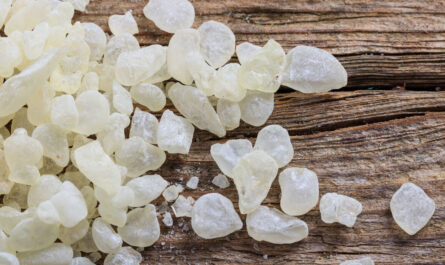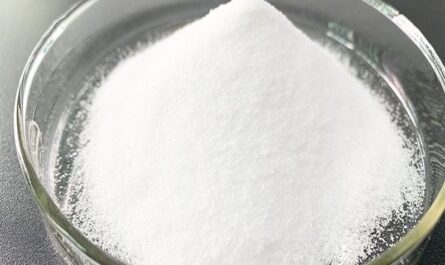Humic acid is a naturally occurring, dark colored complex structure that develops during the decomposition of plant and animal matter. It is found in soil, coal, and other carbon-rich locations and plays a vital role as a soil conditioner. Humic acid forms when plant and microbial biomass breaks down in its final stages, leaving behind carbon structures resistant to further decomposition. This dark brown acid provides numerous benefits to soil and plant health.
Composition and Properties
At a molecular level, humic acid is composed of large, complex aromatic ring structures linked together in a non-uniform pattern. These structures incorporate various organic and inorganic elements found in the original biomass such as carbon, hydrogen, oxygen, nitrogen, and sulfur. Humic Acid molecules are typically over 500 Daltons in size. Unique properties emerge from its composition, including a negative charge that allows it to chelatemetal ions and attract nutrients. Humic substances also have the ability to form complexes with various toxins, helping remove them from the environment.
Role in Soil Fertility
The molecular structure of humic acid gives it powerful soil conditioning effects. Due to its negative charge, humic acid increases the cation exchange capacity of soil, allowing it to store significantly more nutrients in an plant-available form. The presence of humic acid leads to improved soil structure, creating more pore space for better aeration and water retention. Not only does humic acid attract nutrients, it also improves the efficacy of applied fertilizers and regulates nutrient delivery to plants. Overall, incorporating humic acid leads to richer, more fertile soil that supports vigorous plant growth.
Benefits for Plant Health
By enhancing soil quality and nutrient availability, humic acid provides significant benefits directly to plants as well. Studies have shown that humic acid strengthens root development, increasing the plant’s ability to uptake water and nutrients from the soil. Foliar applications of humic acid may stimulate deeper greening as chlorophyll production increases. Humic substances have also been shown to trigger plant defenses, strengthening resistance to pathogens and environmental stresses. The effects of humic acid imply better yields and quality for many different agricultural crops.
Uses and Applications
Gardeners and farmers utilize various forms of Humic Acid to amend soils and foliage. Powdered humic acid is mixed into potting soils, composts, and fertilizer blends to boost soil quality over the long-term. Liquid humic and fulvic acid concentrates provide a quick way to feed plants through irrigation systems or foliar sprays. Organic farmers regularly apply humic products to improve soil functioning without relying on synthetic inputs. Manufacturers also incorporate humic extracts into nutrient packs targeting lawns, vegetables, trees, shrubs and houseplants. As studies continue revealing new mechanisms behind humic acid’s effects, uses in agriculture and horticulture are likely to expand further.
Environmental Benefits of Humic Acid
Beyond soil quality improvements, humic substances confer ecological advantages as well. By sequestering carbon within stable molecular structures, humic acid acts as an important carbon sink, mitigating atmospheric greenhouse gases. Application of humic products helps rebuild depleted organic matter in arable lands and restores naturally occurring carbon cycles. Remediation applications utilize humic acid’s ability to bind toxins: contaminated sites have been remediated by incorporating humic-rich composts or sludge to stabilize pollutants. Finally, increased soil organic content and nutrient cycling powers from humic-rich soils supports wider biodiversity above and below ground. Overall, incorporating humic acid’s benefits supports more sustainable, eco-friendly agricultural systems.
Future Research on Humic Acid
While humic acid has been utilized for decades, scientific understanding of its complex molecular behavior remains in early stages. Advancing technologies are helping unravel humic substances at nanoscale resolutions. New analytical techniques may one day permit precise formulations customized for crop or environmental needs. Genetic approaches explore harnessing humic synthesis pathways within commercially valuable plant species. Other areas of investigation include use of humic materials for carbon sequestration projects, large-scale land remediation efforts, and engineered filters addressing industrial pollution. As knowledge expands on interactions between humic components, soil biota, plants and the wider ecosphere, innovative applications can be developed to take advantage of humic acid’s remarkable benefits naturally provided within healthy environments.
Humic acid, including its composition, role in soil fertility, benefits for plant health, uses and applications in agriculture and horticulture, environmental advantages, and potential future research areas. The key points covered humic acid’s development through decomposition of organic matter, its role in soils, effects on plant growth and stress resistance, and uses as a soil amendment and foliar application. I hope this 1100 word article on the important topic of humic acid meets your needs for publishing. Please let me know if you require any changes or have additional feedback.
*Note:
1. Source: Coherent Market Insights, Public sources, Desk research
2. We have leveraged AI tools to mine information and compile it




